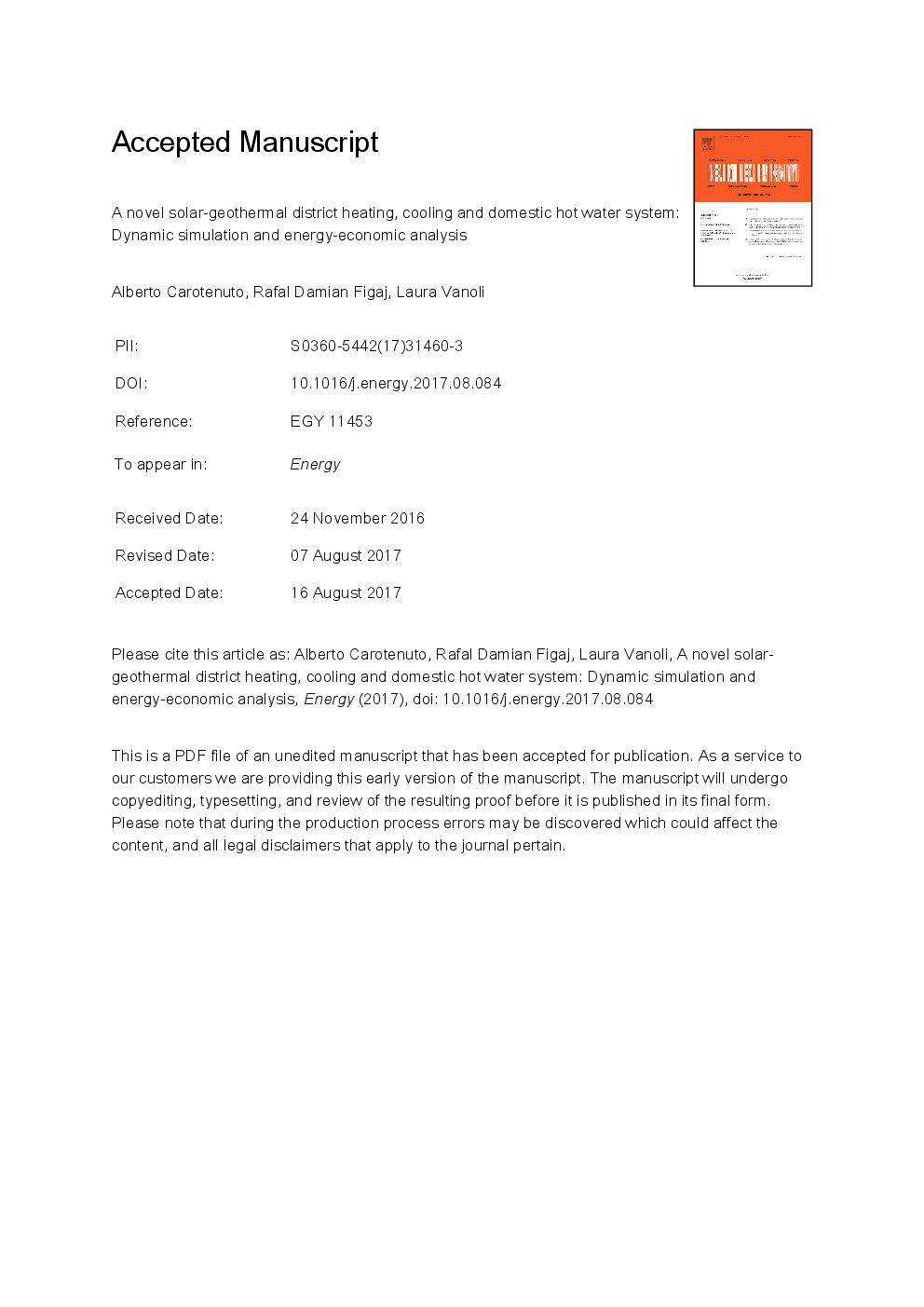ترجمه فارسی عنوان مقاله
یک سیستم جدید گرمایی، خنک کننده و سیستم آب گرم خانگی زمین خورشیدی: شبیه سازی پویا و تجزیه و تحلیل انرژی-اقتصادی
عنوان انگلیسی
A novel solar-geothermal district heating, cooling and domestic hot water system: Dynamic simulation and energy-economic analysis
| کد مقاله | سال انتشار | تعداد صفحات مقاله انگلیسی |
|---|---|---|
| 145871 | 2017 | 54 صفحه PDF |
منبع

Publisher : Elsevier - Science Direct (الزویر - ساینس دایرکت)
Journal : Energy, Volume 141, 15 December 2017, Pages 2652-2669
ترجمه کلمات کلیدی
جمع کننده های تخلیه چیلر جذب، تکمیل ساختمان، مطالعه امکان سنجی، تجزیه و تحلیل پارامتریک،
کلمات کلیدی انگلیسی
Evacuated collectors; Adsorption chiller; Building retrofit; Feasibility study; Parametric analysis;
ترجمه چکیده
یک شبیه سازی 1 ساله انجام می شود و عملکرد سیستم با پایگاه های روزانه، هفتگی و سالانه تحلیل می شود. تجزیه و تحلیل سیستم با تجزیه و تحلیل حساسیت انجام شده است، به منظور ارزیابی انرژی سیستم و سودآوری اقتصادی به عنوان عملکرد منطقه میدان خورشیدی جمع آوری شده است. نتایج نشان می دهد که انرژی زمین گرمایی و انرژی خورشیدی فقط برای مطابقت با تقاضای حرارتی کاربران منطقه در زمستان استفاده می شود، در حالی که فقط در تابستان فعال سازی دیگ بخار زغال سنگ کمکی برای مطابقت با تقاضای خنک کننده فضایی اجباری است. سیستم ریاضی رضایتبخش عملکرد سالانه از لحاظ بازده خورشیدی کلکتور (بیش از 40٪) و جذب کننده چیلر ضریب عملکرد (0.5). این سیستم از نظر اقتصادی بدون هیچ گونه کمک مالی عمومی (ساده پرداختن 20.9 سال) امکان پذیر نیست، در حالی که نسبت انرژی اولیه مهم (بیش از 75٪) است. در مورد سیاست های تأمین مالی عمومی، دوره ی پرداخت ساده می تواند به نصف کاهش یابد.

